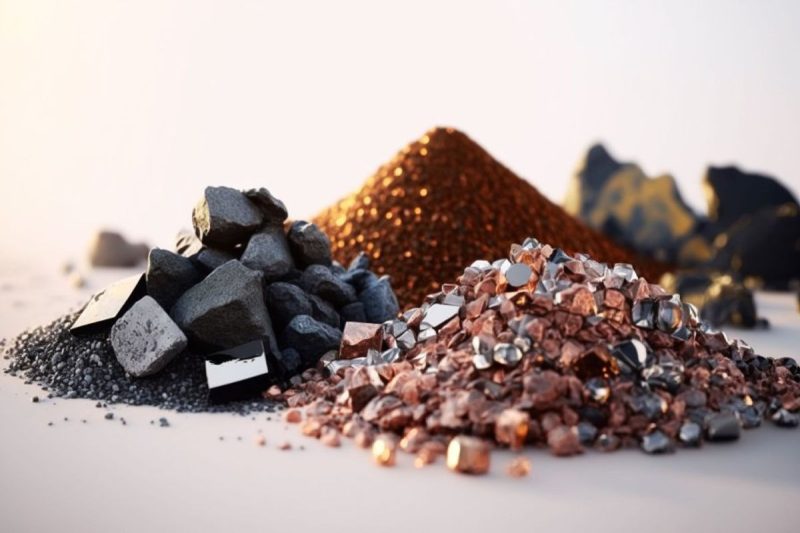Rare earths are key elements for reaching the energy transition targets set by governments around the world, with demand expected to be strong in coming decades.
The group of critical metals has increasingly become a trade war pawn between China and the US, as the former dominates the market. Rare earths are used in everything from smartphone cameras to defense systems, and are much more prevalent in our day-to-day lives than many may think.
How did rare earths perform so far in 2023?
Going into 2023, magnet rare earths prices were expected to hold onto their gains on the back of a prevailing tightness in the market, but prices declined as output in China increased and demand softened.
“Prices for other non-magnetic rare earths have also, as expected, continued a downward trend, though the severity of price declines for lanthanum and cerium has been above expectation,” he said.
In terms of supply, unsurprisingly, China remained the world’s top producer in 2022, with output reaching 210,000 MT, according to the US Geological Survey. The US came in second, with production reaching 43,000 MT.
Looking at what’s ahead for the second half of 2023, Project Blue’s outlook for REE supply remains roughly unchanged from earlier in the year.
“(There are) small mark-ups for production of ionic adsorption clay type ores in Myanmar and Lao and monazite concentrate from South East Asia and Africa,” Merriman said.
Myanmar provides about 40 percent of China’s medium to heavy rare earths feedstock. In fact, China’s imports of rare earths from Myanmar have surged this year, according to customs data, while Laos has also sent some small shipments to China.
Project Blue forecast the role of ionic clay mining in Myanmar and now also Laos to have a limited time span, however, because of their accompanying poor environmental, social and governance credentials.
“While the short-term demand outlook will be met by this supply, over the long term Project expects technological developments will need to play a key role to move the magnet rare earths into a sustainable pattern,” Merriman said.
On the demand side, Adamas Intelligence data shows global consumption of neodymium magnets increased just 1.9 percent year-over-year in 2022, the slowdown caused by global economic headwinds and regional pandemic-related challenges.
“Nevertheless, from 2023 through 2040 we forecast that global demand for neodymium magnets will increase at a CAGR of 7.5 percent, bolstered by double-digit growth from electric vehicle and wind power sectors, translating to comparable demand growth for the critical rare earths elements (i.e., didymium, dysprosium and terbium) these magnets contain,” the firm states in its latest report.
Neodymium praseodymium oxide is used in the production of permanent neodymium magnets, which, in turn, are used for applications that include the production of electric vehicle motors and direct drive wind turbines.
Commenting on what might be ahead for demand, Merriman said he expects terbium and dysprosium to display the strongest demand growth in 2023, linked to their use in high performance permanent magnet applications, followed by neodymium and praseodymium and gadolinium.
“Overall rare earth demand is forecast to reach 177.6kt rare earth oxides in 2023, increasing by roughly 3.5 percent year on year,” he added.
In terms of prices, Project Blue expects prices for key magnet rare earths to stabilize in Q3 before showing an upward trend towards the end of the year.
“For non-magnet elements, further downward price pressure is expected,” Merriman said.
What factors will move the rare earths market in 2023?
When asked about which factors to watch out for in the second half of 2023, Merriman said market sentiment in the Chinese domestic EV market, and the H2 Chinese production quota announcement will be key factors to keep in mind.
Chinese producers must adhere to a quota system for rare earths production. In March, the Asian country set a quota for the first batch of rare-earth mining in 2023 at 120,000 metric tons, up by about 20 percent compared to 2022.
Without doubt, China plays an important role in the REE market, making moves in the past years to stabilize the supply chain and improve supply availability.
“China has a huge influence on global rare earth pricing, which is unlikely to be challenged by the ‘West’ in the short term horizon,” Merriman said.
Looking further ahead, in the coming years, prices and demand for rare earth oxides are forecast to be robust.
Earlier this year, Adamas Intelligence forecast that, from 2022 through 2035, the value of rare earth oxides consumed by applications related to the energy transition will rise at a CAGR of 19.1 percent, from US$3.8 billion in 2022 to US$36.2 billion in 2035.
“This growth will be led primarily by passenger EV traction motors, which will drive over 50 percent of the value of consumption in 2035, followed by wind power generators, which will propel another 25 percent,” the firm stated.
Securities Disclosure: I, Priscila Barrera, hold no direct investment interest in any company mentioned in this article.

